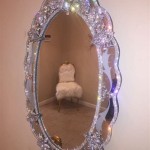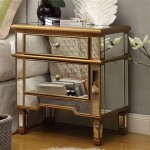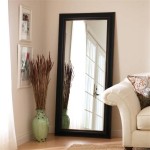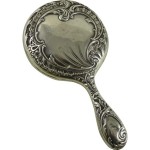How To Hang a Mirror Above a Sink
Hanging a mirror above a sink is a common bathroom upgrade that can enhance both the room's functionality and aesthetics. However, the presence of plumbing and the need for precise placement require careful planning and execution. This guide provides a comprehensive approach to hanging a mirror securely and effectively above a bathroom sink.
Planning and Preparation: Before beginning the installation, gather the necessary tools and materials. These typically include a measuring tape, a level, a pencil, a stud finder, appropriate wall anchors (depending on wall type), a drill with the correct drill bit size for the anchors, screws suitable for the anchors and mirror's hanging hardware, a screwdriver, and safety glasses.
Choosing the Right Mirror: The mirror's dimensions should complement the sink and vanity size. A general guideline suggests that the mirror's width should be slightly narrower than the sink's width, leaving a few inches of space on either side. Consider the mirror's shape and style to ensure it aligns with the overall bathroom design.
Determining the Ideal Height: The mirror's bottom edge should typically be positioned 5-10 inches above the sink's countertop. This allows for practical use while minimizing splashing. Individual preferences and user height can influence this measurement. Taller individuals may prefer a slightly higher placement.
Locating Wall Studs: Using a stud finder, locate and mark the positions of wall studs behind the area where the mirror will hang. Hanging the mirror directly on wall studs provides the most secure installation. If studs are not located where the mirror's hanging hardware requires them, appropriate wall anchors will be necessary.
Marking the Mirror's Position: After determining the desired height and centering the mirror above the sink, lightly mark the mirror's top and bottom edges on the wall with a pencil. Double-check the measurements and levelness before proceeding.
Installing Wall Anchors (if necessary): If wall studs do not align with the mirror's hanging hardware, carefully drill pilot holes at the marked locations for the wall anchors. Ensure the drill bit size corresponds to the anchor manufacturer's recommendations. Insert the anchors into the pilot holes, following the manufacturer’s instructions.
Attaching Hanging Hardware to the Mirror (if necessary): Some mirrors come with pre-installed hanging hardware, while others require it to be attached. If attaching hardware, follow the manufacturer's instructions carefully to ensure proper placement and secure fastening.
Hanging the Mirror: Carefully lift the mirror and align its hanging hardware with the installed screws or wall anchors. Slowly lower the mirror onto the hardware, ensuring it's securely in place. If using D-rings or wire, ensure the wire is taut but not overly tight.
Verifying Levelness and Stability: Once the mirror is hung, use a level to verify its horizontal alignment. Gently push on the mirror's edges to confirm its stability. If the mirror feels loose or wobbly, re-evaluate the installation and ensure all screws and anchors are properly secured.
Cleaning and Finishing: After installation, clean the mirror's surface with a suitable glass cleaner to remove any fingerprints or smudges. Inspect the surrounding area for any dust or debris created during the installation process.
Considerations for Different Wall Types: Different wall types require specific anchoring methods. Drywall typically utilizes plastic expansion anchors or toggle bolts. For plaster walls, it's recommended to use heavy-duty wall anchors designed for brittle materials. Always consult the anchor manufacturer's instructions for the appropriate wall type and weight capacity.
Safety Precautions: Wear safety glasses throughout the entire process to protect eyes from dust and debris. When using power tools, ensure the area is well-lit and free of obstructions. If working with heavy mirrors, consider enlisting assistance to prevent accidents.
Alternative Hanging Methods: Adhesive-backed hanging strips can be used for lighter mirrors on smooth, non-porous surfaces. However, it's essential to ensure the adhesive is rated for the mirror's weight and the wall's surface type. This method is generally not recommended for heavier mirrors or textured walls.
Dealing with Uneven Walls: If the wall is uneven, shims may be necessary to ensure the mirror hangs flush. Place small shims behind the mirror's hanging hardware as needed to achieve a level and stable installation. Ensure the shims are securely in place and do not interfere with the hanging hardware's function.

How To Pick And Hang The Perfect Bathroom Mirror Roomhints

Guide To Hanging Bathroom Vanity Lighting And Mirrors Liven Design

How High Should You Hang The Mirror In A Bathroom With Photos Design Morsels

How To Pick And Hang The Perfect Bathroom Mirror Roomhints
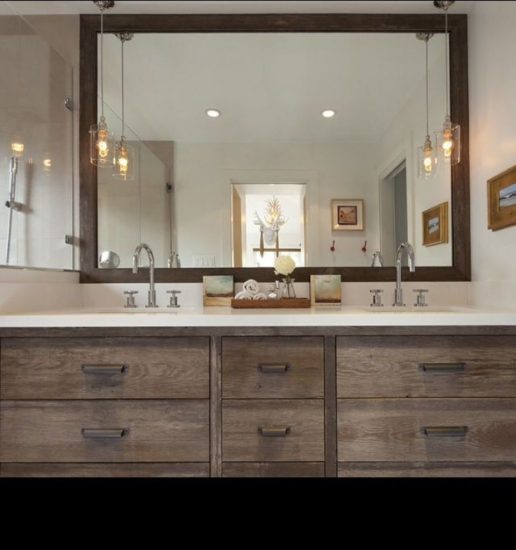
How High To Hang A Vanity Mirror Sparrow Stoll

How High To Place Your Bathroom Fixtures Inspired Style

How To Pick And Hang The Perfect Bathroom Mirror Roomhints

How High To Place Your Bathroom Fixtures Inspired Style

The Right Height For Your Bathroom Sinks Mirrors And More

How High To Hang A Vanity Mirror Sparrow Stoll

